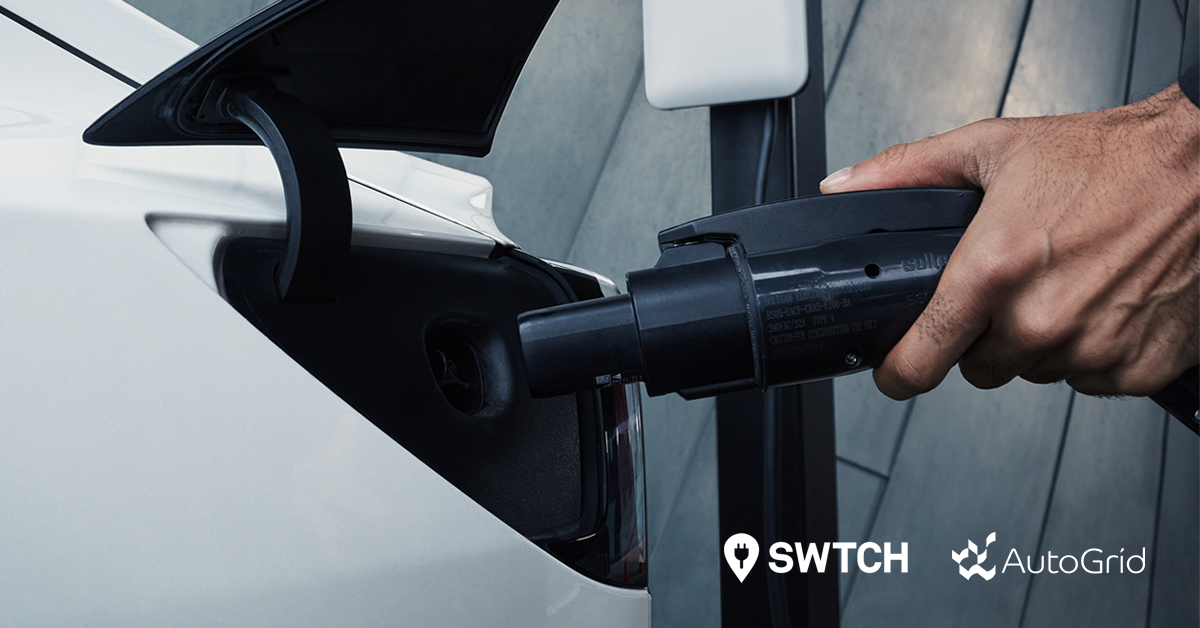As more electric vehicles enter the global market, grid infrastructure and new capacity always becomes a hot topic. For EV chargers not in use, why not allow them to provide grid flexibility by putting power into the grid during peak power consumption times of the day?
This week EV charging network company SWTCH Energy partnered with demand response technology company AutoGrid to integrate 250 EV chargers in a multi-tenant property portfolio into an active demand response program in Canada. This partnership marks the first time that a North American utility will incorporate multi-unit residential building chargers into its demand response programs.
Demand response is a technology-enabled conservation system for electric power involving shifting or shedding electricity during peak demand periods. Demand response works in two ways: price-based programs, which use price signals and tariffs to incentivize consumers to use less electricity, and incentive-based programs that pay consumers directly. As utilities pledge to cut carbon emissions, the global demand response market is expected to hit $1.07 billion by 2025.
AutoGrid’s Flex platform processes data from millions of distributed generation assets simultaneously and forecasts demand patterns, helping utilities automate distributed energy management. With this platform SWTCH Energy’s EV chargers can participate in AutoGrid’s demand response programs, adjusted remotely for brief periods, helping manage demand on the electric grid.
“North American energy infrastructure is coming under tremendous pressure, making the introduction of turnkey, efficiency-boosting measures more important than ever,” said Carter Li, co-founder and chief executive officer of SWTCH Energy. “With AutoGrid’s proven experience as a leading DERMS provider, we look forward to a successful launch in Canada and a rapid expansion across North America.”
While this type of demand response program is gaining traction throughout the single-family home category, multi-tenant building assets remain an untapped resource. The partnership between SWTCH and AutoGrid sets a precedent for DERMS providers and utilities across the continent at a time when the need for energy resilience is more dire than ever.
A similar demand response platform was initiated in mid-2020, with EnergyHub, using Sunrun, Tesla and Vivint Solar PV and batteries. In another, National Grid and its Connected Solutions program deployed a demand response platform providing customers a “bring your own battery” approach. The utility was able to call up to 60 DR “events” over a summer, each lasting up to three hours.
After Winter Storm Uri in early 2021, Texas saw an increase in the number of back-up generator installations precisely to address power insecurity. While wind and solar have been growing with the help of subsidies and ever-evolving power trading arbitrage, there have been an increasing number of demand response dispatches by ERCOT. Some of these dispatches have lasted little more than an hour, some have lasted for around 100 hours (like during winter storm Uri). While they shed power, and while they were offline, 1 MW in some programs paid almost $1.0 million per MW for just that week.
Founded in 2016, SWTCH is a Toronto-based EV charging network company that has raised about $17.5 million in growth funding to date from Aligned Climate Capital, Active Impact Investments, Landmark Management, Silicon Valley Bank, Elemental Energy and IBI Group.
SWTCH Energy operates a network of 3,000 Level 2 (AC) and DC fast charging stations in the U.S. and Canada.
Founded in 2010, AutoGrid was acquired in mid-2022 by Schneider Electric after raising $161 million in growth funding. The company’s Virtual Power Plant (VPP) and Distributed Energy Resources Management (DERMS) platform offers a sustainable alternative to conventional fossil-fuel dependent backup power plants by managing and deploying additional untapped capacity from batteries, EVs and flexible load.
This content is protected by copyright and may not be reused. If you want to cooperate with us and would like to reuse some of our content, please contact: editors@pv-magazine.com.









By submitting this form you agree to pv magazine using your data for the purposes of publishing your comment.
Your personal data will only be disclosed or otherwise transmitted to third parties for the purposes of spam filtering or if this is necessary for technical maintenance of the website. Any other transfer to third parties will not take place unless this is justified on the basis of applicable data protection regulations or if pv magazine is legally obliged to do so.
You may revoke this consent at any time with effect for the future, in which case your personal data will be deleted immediately. Otherwise, your data will be deleted if pv magazine has processed your request or the purpose of data storage is fulfilled.
Further information on data privacy can be found in our Data Protection Policy.